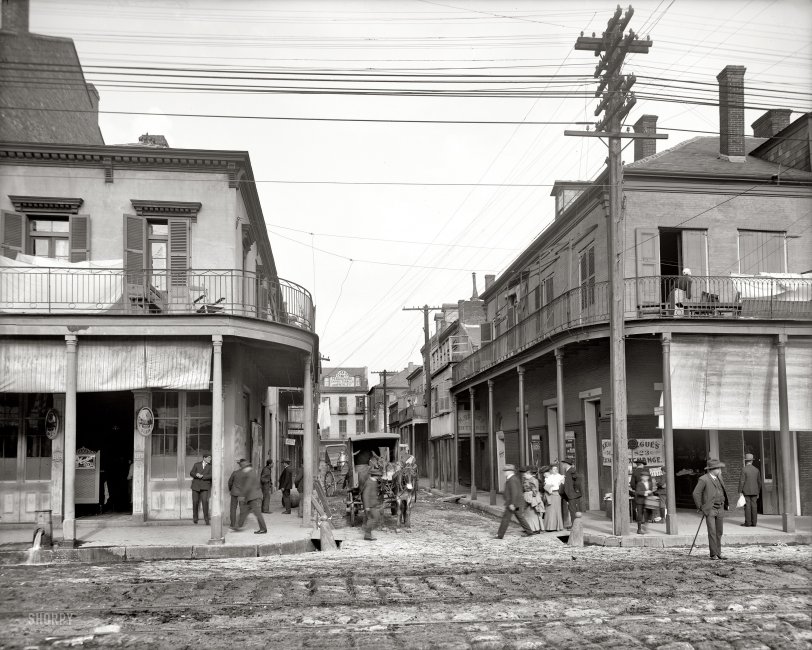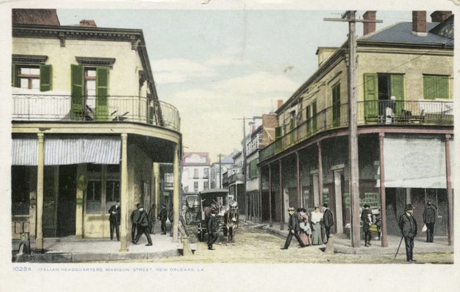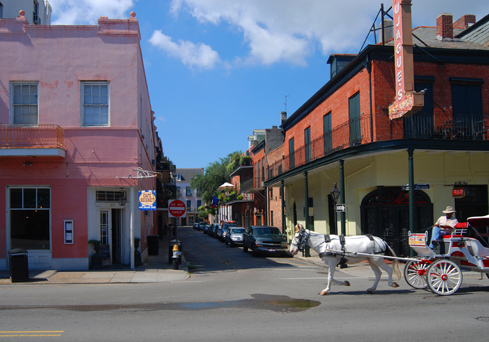


Framed or unframed, desk size to sofa size, printed by us in Arizona and Alabama since 2007. Explore now.
Shorpy is funded by you. Patreon contributors get an ad-free experience.
Learn more.

- Freeze Frame
- Texas Flyer wanted
- Just a Year Too Soon
- WWII -- Replacing men with women at the railroad crossing.
- Yes, Icing
- You kids drive me nuts!
- NOT An Easy Job
- I wonder
- Just add window boxes
- Icing Platform?
- Indiana Harbor Belt abides
- Freezing haze
- Corrections (for those who care)
- C&NW at Nelson
- Fallen Flags
- A dangerous job made worse
- Water Stop
- Passenger trains have right of way over freights?
- Coal
- Never ceases to amaze me.
- Still chuggin' (in model form)
- Great shot
- Westerly Breeze
- For the men, a trapeze
- Tickled
- Sense of loneliness ...
- 2 cents
- Charm City
- What an Outrage
- Brighton Park
Print Emporium
Nuovo Orleans: 1906

New Orleans circa 1906. "Italian headquarters, Madison Street." 8x10 inch dry plate glass negative, Detroit Publishing Company. View full size.
Bollards
The "conical things" are to prevent vehicles, horses, etc. from cutting the corner and having the wheel or hoof drop into the rather large gutter. Anybody who has ever seen a New Orleans downpour understands the need for the large gutters (mini ditches).
Street Dramas
I love these street dramas. The guy on the far right (a veteran of the War Between the States) has probably been in Begue's and is on his way to the market. Behind him is a boy with a hamper -- maybe a picnic lunch? -- in a big hurry. To the boy's right a woman in a white blouse and birds-nest hat is clearly annoyed with the older man at her side (has he been drinking?). On the sidewalk, two small swarthy fellows, one of whom looks vaguely Chinese, are clearly arguing. The fellow without the hat is gesticulating with his right hand to make a point. My favorite, though, is the dandy leaning against the building, taking in all the action. He's wearing a winged collar, a colorful cravat, and a wildly improbable cap. His shoes gleam in the Southern sun.
Madison Street postcard
Here's the view as it was mass produced as a postcard.
Tujague's Restaurant at this location today has their main dining room on the ground floor. Madame Begue's Restaurant at the time of this photo was upstairs. Looking at the streets in the horse era, I better understand why.
Cafe du Monde is just up the street. A friend used to live in an apartment just back on Madison Street; she said she enjoyed being able to smell the coffee and begneits from her room in the morning.

Christian Moerlein
Whoever was in charge of their distribution was earning their money. Today I have to go to Ohio, or at least northern Kentucky, to get a case of Barbarossa.
https://www.shorpy.com/node/1766
Prost!
Lyle Saxon
The great writer Lyle Saxon used to live in a Creole Townhouse on this street. Read "Fabulous New Orleans." He also edited the New Deal guidebook on New Orleans.
What are those
... conical things with the ball on top at the corners?
[Bollards! - Dave]
Smell! What smell?
For two years I lived in a post-WWII city that had been reduced to mostly rubble. The canals that ran through it stank of everything man or animal could produce. However, after about two months, I didn't even notice it and, instead, enjoyed watching the reaction of newcomers. I suspect the folks who lived with horses and outhouses every day also got used to the smell.
Awash in ...
poo.
The enlarged photo gives you a good idea what streets which weren't washed on a regular basis looked like. You can imagine THAT on a rainy day and imagine the humid aroma when the sun came out.
Very classy
Amazing how everyone looks like they are about to go to a black tie event.
Imagine
Sitting in that rockin' chair on the balcony overlookin' Madison. Enjoyin' a nice cold beer (or two), maybe some oysters with hot sauce. My memories of Gretna all come back. No better way to while away a lazy summer day.
+102
This view is looking down Madison from Decatur (the French Market is directly behind the photographer). Here is the identical view taken in September of 2008 (I couldn't tell if anyone in the 2008 shot was Italian, but the mule did resemble some of my relatives).

Begue & Tujague
Very cool. The building on the right (Begue's) has been the famous Tujague's restaurant since 1914:
Tujague's closest competition always had been Begue's, a few doors up Decatur at the corner of Madison. The proprietor-chef there was the legendary Elizabeth Kettenring Dutreuil Begue, a Bavarian emigrant who had been cooking for the French Market crowd since 1863.
In 1906, Madame Begue, died and her restaurant was taken over by her daughter and son-in-law, the Anouilles. One of the employees at Madame Begue's was Jean-Dominic Castet, who had come to New Orleans from France in 1905. Castet and Philibert Buichet decided to join forces, and in 1914 they bought Elizabeth Begue's restaurant from her now-widowed daughter and hung out a new sign reading "Tujague's"
























On Shorpy:
Today’s Top 5